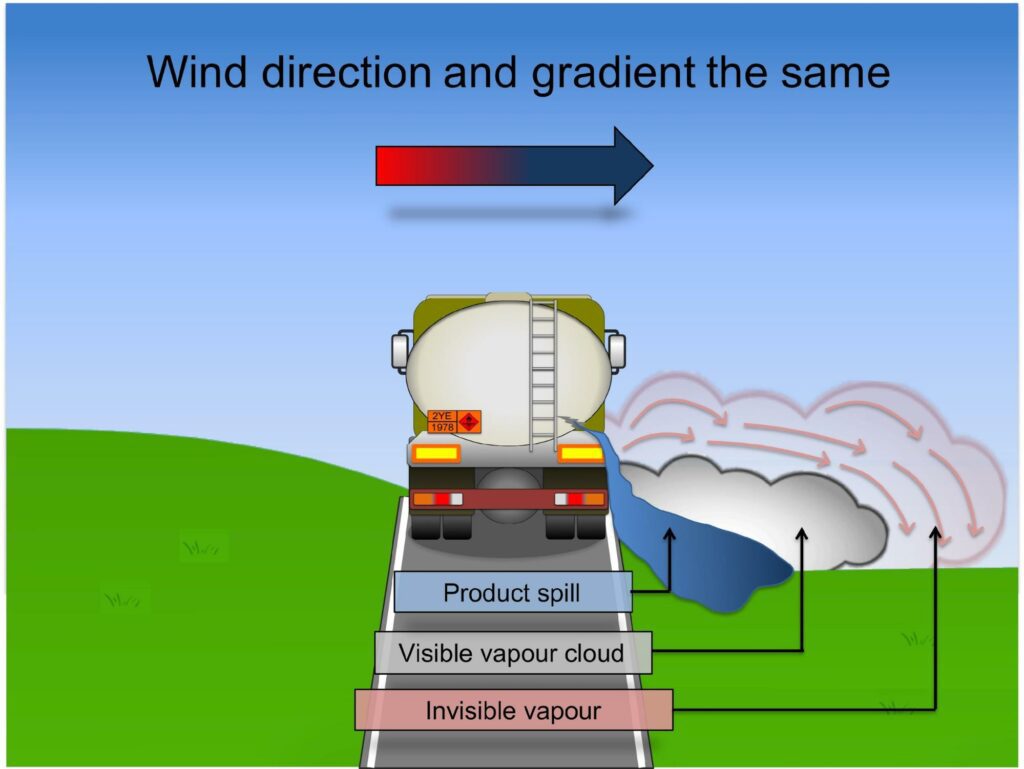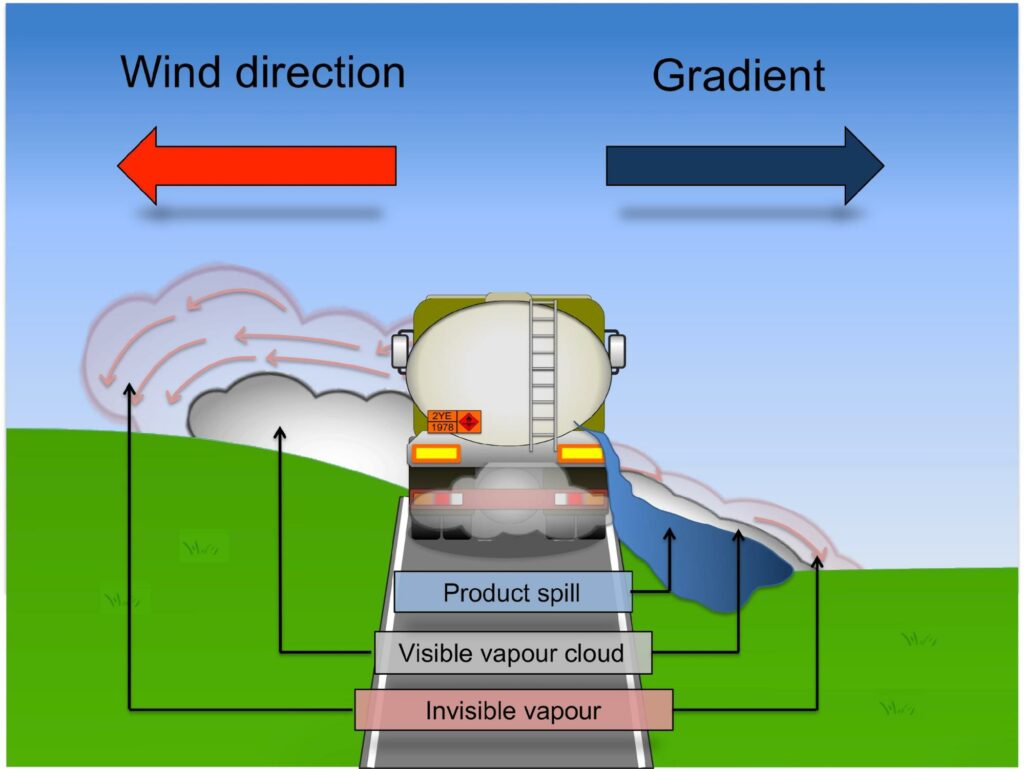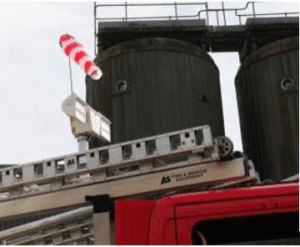Weather information: Hazardous materials
Control Measure Knowledge
This control measure should be read in conjunction with Monitor weather conditions
Two major factors that affect the way materials spread following a release are ground slope and weather, predominantly wind. This effect may be increased when an explosive is used as a means of dissemination. Material may initially be expelled in all directions and spread over a wide area from the point of release. The fallout may also include undetonated explosive material.
Vapours will be affected by slope and wind and will travel further and spread more quickly than liquids, which in turn will spread further than solids. For solids, the particle size will affect the spread (e.g. fumes, powder, granules, solid pieces). Other weather-related factors that can affect hazardous materials incidents are temperature and rain. Temperature is important, particularly where the substance has a melting or boiling point that could be reached during the incident. A change in state of the substance may have a significant impact on tactical options and the risk assessment.
Rain can also have a significant effect as its interaction with some substances can affect their behaviour. For example, vapours that are water-soluble will dissolve in rain, reducing the concentrations of vapours in the air and reducing the distance over which they will be able to cause harm. However, if substances are dissolved in rainwater and then enter drains or a body of water, the pollutants could be dispersed or collect and then flow to other locations. Water-reactive substances that are exposed to rain may cause a change to the incident that may increase the level of hazard.
Weather reporting systems should be accessed through fire control rooms or mobile data terminals to assist decision making on the appropriate direction of an approach to an incident (staying upwind, uphill), to determine initial cordons, RVPs, marshalling areas and potential downwind hazard zones.
Effects of wind and gradient on a release


Figure 4: Effect of wind and gradient on a spill
Responders should consider deploying improvised wind monitoring devices. Examples are shown in the following photos.


